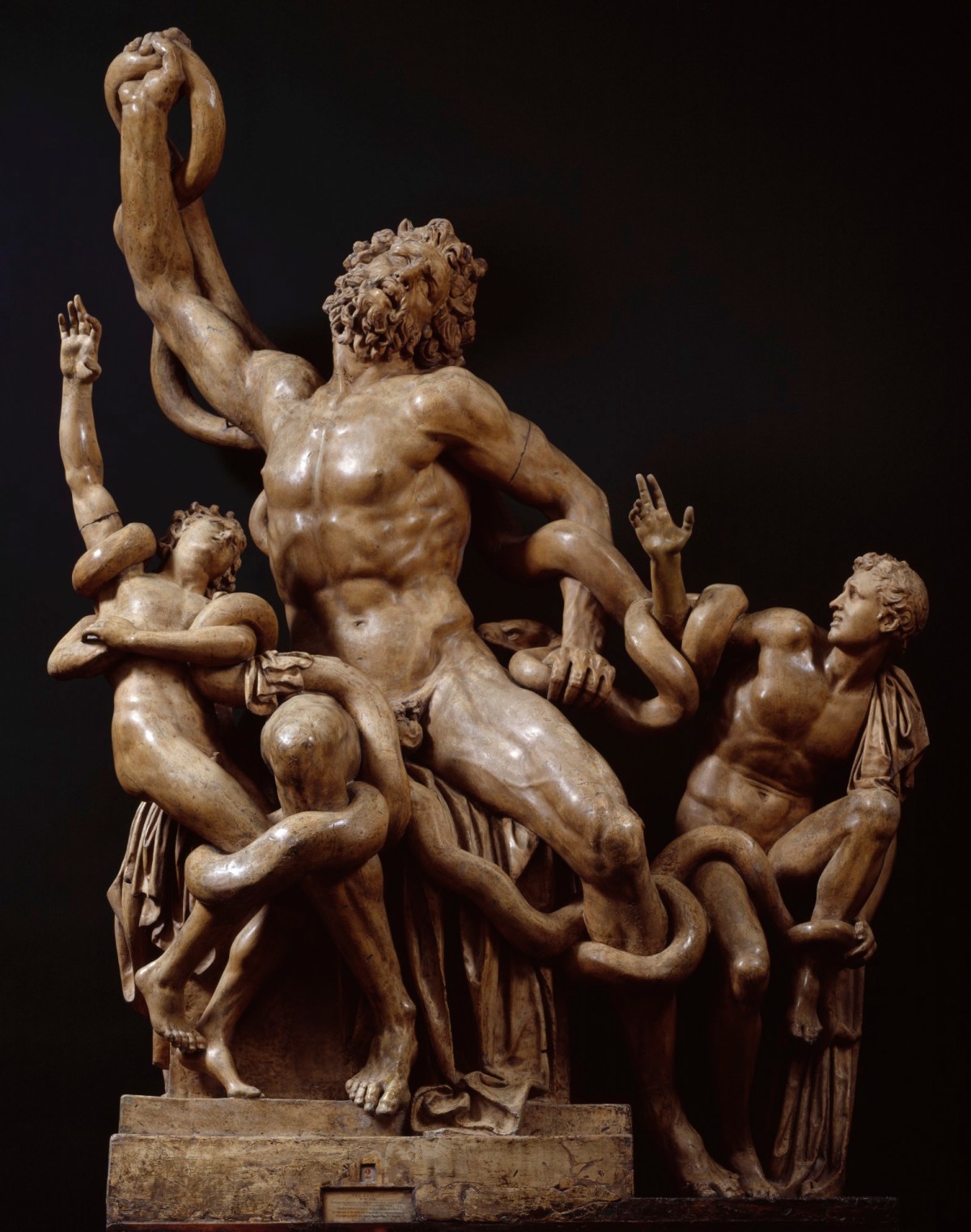
Cast of Laocoön and his Sons (Roman version of a lost Greek original), c.100BC-50AD.
Plaster cast, early 19th century. 2420 mm x 1630 mm x 800 mm. © Photo: Royal Academy of Arts, London. Photographer: Paul Highnam.
This image is not available to download. To licence this image for commercial purposes, contact our Picture Library at picturelibrary@royalacademy.org.uk
Cast of Laocoön and his Sons (Roman version of a lost Greek original), c.100BC-50AD
RA Collection: Art
On free display in Collection Gallery
In classical mythology the priest Laocoön warned fellow Trojans against bringing into their city the wooden horse presented by the Greeks. This aroused the anger of the god Poseidon, who favoured the Greeks, and who sent sea serpents to strangle Laocoön and his sons.
This is a plaster cast of the group Laocoön and his Sons by Hagesandrus, Polidorus and Athenodorus of Rhodes from around the 1st century BC to the early 1st century AD, itself a copy of an earlier sculpture. It was found at the Esquiline Hill in Rome in 1506. The attribution originated with the ancient Roman author Pliny the Elder, who recorded the sculpture as being in the palace of Titus and described it as 'of all paintings and sculptures, the most worthy of admiration'.
Soon after its discovery Pope Julius II installed the sculpture at the Villa Belvedere along with the rest of his collection of Roman sculpture, which also included the Apollo Belvedere and the Belvedere Torso. In the 16th century Laocoön and His Sons was regarded even more highly than the Apollo Belvedere, and a full-size marble copy was made in 1523 as a present for François 1st of France (now in the Uffizi Gallery, Florence).
During the Napoleonic Wars the original sculpture was ceded by Pope Pius VI to the French in 1797 under the Treaty of Tolentino, and was sent to Paris, arriving in 1798 as part of a triumphal procession. It was displayed in the Musée Central des Arts from 1800 before returning to Rome in 1816 following the final defeat of Napoleon’s army. The Royal Academy cast, one of a group given to the RA by the Prince Regent in 1816, was probably made while the statue was in Paris. The RA previously possessed another cast, shown in Henry Singleton’s 1795 painting The Royal Academicians in General Assembly, but that was undoubtedly superseded by the cast from the Prince Regent, which was of an unusually high quality.
The original statue has a complicated history of restorations. When the work was discovered, Laocoön's right arm and the right hands of both sons were missing. There are various deliberations about whether Laocoon's arm should be bent or (as it is now) straight. When the statue was removed to France the restorations were removed and replaced by casts from a late 17th century cast of a model whose arms were supposed to be by Giradon.
Further Reading
Pliny the Elder, Natural History
Supported in memory of Brian & Mary Senior, Friends of the RA
Object details
2420 mm x 1630 mm x 800 mm
Start exploring the RA Collection
- Explore art works, paint-smeared palettes, scribbled letters and more...
- Artists and architects have run the RA for 250 years.
Our Collection is a record of them.



